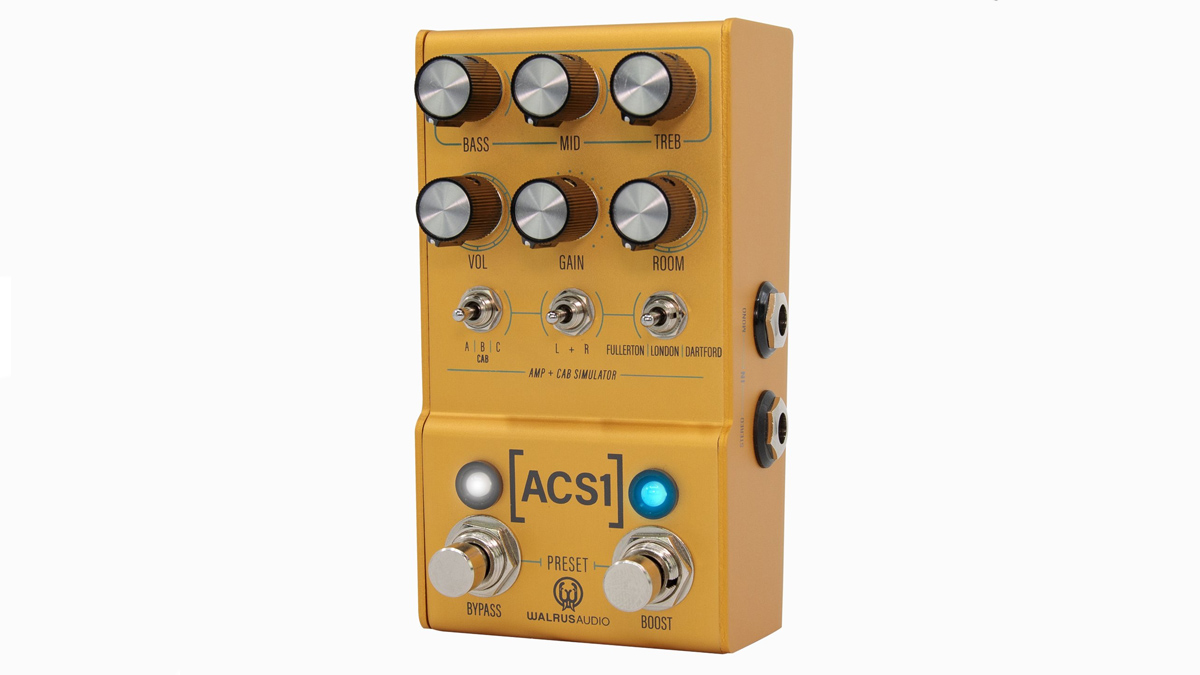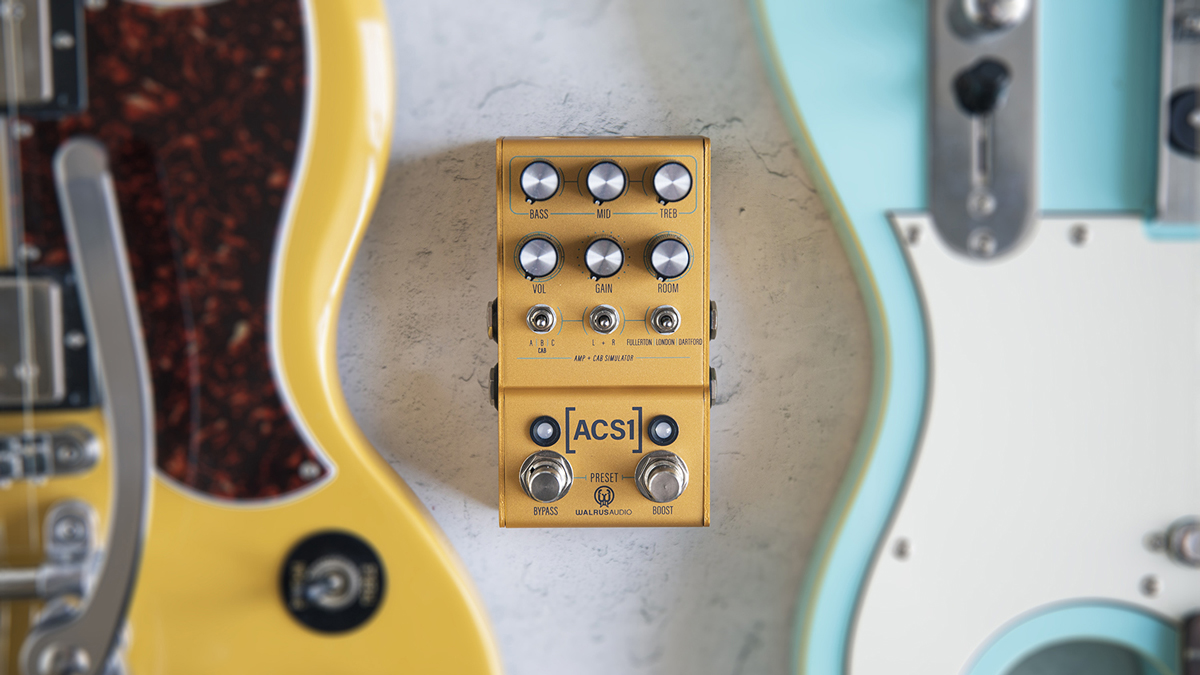Guitar World Verdict
Three highly desired classic amp flavours made easily accessible for headphone practice, recording and live use.
Pros
- +
Three quality amp sims.
- +
Stereo operation.
- +
MIDI connectivity.
- +
Headphones output.
Cons
- -
A little more gain would sweeten the deal.
You can trust Guitar World
Walrus Audio's Mako Series might might have a more minimalist paintjob on their enclosures but this line of high-end stompboxes offers a comprehensive features set on what is becoming a familiar format.
Pedals such as the Mako Series D1 High-Fidelity Stereo Delay and R1 High-Fidelity Stereo Reverb arrive in a plain metallic paintjob, and offer a dual-footswitch format that is around the same size as a Boss pedal.
On the front you will find six knobs and a trio of mini-toggle switches, with inputs for mono and stereo operation. Mako Series pedals support 128 presets via MIDI – plus full control over parameters for deep editing – and many of these presets you can store and recall on the pedal itself.
The ACS1 is an amp and cab simulator in a stompbox, not dissimilar to the Strymon Iridium. You get a choice of three amps based on a Fender Deluxe Reverb, a 1962 Marshall Bluesbreaker and a 1960s vintage Vox AC30.
These can be paired with six onboard cabinet impulse responses, or you can load your own IRs via USB. There are a range of knobs for tweaking the amp sound (Volume, Gain, Bass, Mid and Treble) plus a knob to add in some very useful room-simulating ambience.
The ACS1 can be used in mono but also supports stereo operation, whereby one amp can be used through both channels or you can mix and match amps and cabinets on the left and right channels with the L + R switch. Three presets keep your preferred sounds ready to go, and the second footswitch brings in a user-set boost with different volume and gain knob settings to kick things up.
The amps and cabs deliver an authentic playing experience over a range from clean through dirtier sounds, although we feel that if Walrus offered a little more gain for each beyond the presumably authentically recreated limits, it would add to the versatility.
All the latest guitar news, interviews, lessons, reviews, deals and more, direct to your inbox!

Specs
- PRICE: $399 / £365
- ORIGIN: USA
- TYPE: Amp and cab simulator pedal
- FEATURES: True bypass, 3 onboard presets, MIDI, 3 amp types, 6 factory IRs, IR loading
- CONTROLS: Bass, Mid, Treble, Volume, Gain, Room, Cab switch (A/B/C), L+R switch, Amp switch (Fullerton/London/Dartford), Boost footswitch, Bypass footswitch
- AMP & CABS: Fullerton (Fender), London (Marshall), Dartford (Vox);
- CABS: Fender Deluxe, Marshall 4x12, Vox Green Back, Fender Super Reverb, Two Rock, Vox Blue Back
- CONNECTIONS: Standard inputs (Left/Mono, Right), standard outputs (Left/Mono, Right), mini-jack headphone output, USB, MIDI in, MIDI out
- POWER: 9V DC adaptor (not supplied) 300mA
- DIMENSIONS: 73 (w) x 125 (d) x 60mm (h)
- CONTACT: Walrus Audio
Trevor Curwen has played guitar for several decades – he's also mimed it on the UK's Top of the Pops. Much of his working life, though, has been spent behind the mixing desk, during which time he has built up a solid collection of the guitars, amps and pedals needed to cover just about any studio session. He writes pedal reviews for Guitarist and has contributed to Total Guitar, MusicRadar and Future Music among others.


